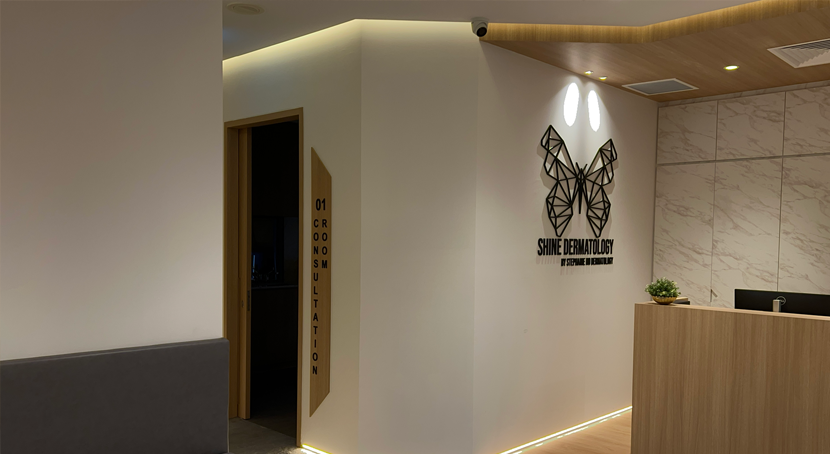What Are Skin Tags?
Skin tags, or acrochordons, are small, soft, flesh-coloured or slightly pigmented growths that typically appear in skin folds. They are composed of normal skin tissue and are benign, meaning they are non-cancerous. Though painless, they can bleed, become irritated, or snag on jewellery or clothing, prompting many people to seek removal.
Causes and Risk Factors
Skin tags are more common in adults and tend to appear in areas where skin rubs together. Contributing factors include:
-
Friction: Especially in areas such as the neck, armpits, groin, or under the breasts
-
Ageing: Incidence increases after age 40
-
Hormonal changes: During pregnancy or menopause
-
Genetics: Family history may play a role
-
Underlying health conditions: Such as obesity or insulin resistance
How We Remove Skin Tags at Shine Dermatology
At Shine Dermatology, we use evidence-based, minimally invasive methods to safely and precisely remove skin tags. The most appropriate technique is selected based on the size, number, and location of the growths.
|
Technique |
Description |
Common Uses |
|
Snip Excision |
The tag is gently snipped off using sterile scissors under local anaesthesia |
Fast, effective for most small to medium tags |
|
Electrosurgery |
High-frequency electrical current dries and removes the tag |
Ideal for pedunculated or larger tags |
|
Cryotherapy |
Liquid nitrogen freezes the tag, causing it to fall off after a few days |
Suitable for smaller lesions, minimal downtime |
|
Laser Ablation |
Focused laser removes the tag with precision and minimal skin disruption |
Best for delicate or cosmetically sensitive areas |
All procedures are performed by dermatologists in a regulated clinical setting, with strict hygiene and safety protocols. Most sessions take less than 30 minutes and require no downtime.
What to Expect During and After Treatment
Before removal, your dermatologist will assess the growth to confirm it is a benign skin tag. If necessary, a biopsy may be recommended to rule out other skin conditions.
The procedure itself is quick, and most patients experience minimal discomfort. After removal, you may notice mild redness or a small scab that typically heals within 7–10 days. Detailed aftercare instructions will be provided to ensure optimal healing and reduce the risk of pigmentation or infection.
Why Choose Shine Dermatology for Skin Tag Removal?
-
Experienced Dermatologists: Treatments performed by medically trained doctors with skin surgery expertise
-
Tailored Treatments: Individualised approach based on skin type and lesion location
-
Minimally Invasive Techniques: Designed to reduce discomfort, downtime, and scarring
-
Safe Clinical Environment: MOH-regulated procedures in a medical setting
Frequently Asked Questions (FAQ)
1. Are skin tag removals covered by insurance in Singapore?
Most skin tag removals are classified as cosmetic and are not covered by insurance. However, if a tag causes persistent discomfort or bleeding, partial coverage may be considered depending on your insurer and policy.
2. Is the procedure painful?
Most patients experience little to no pain. Local anaesthetic is used for excision and electrosurgery. Cryotherapy and laser removal may cause a short stinging or burning sensation, but this is typically brief.
3. Will the skin tag come back?
Once removed, the same tag does not grow back. However, individuals prone to skin tags may develop new ones over time, especially if the underlying causes (e.g., friction, weight gain) persist.
4. How long does recovery take?
Treated areas usually heal within 7–10 days. Any redness or scabbing resolves on its own with proper aftercare. Normal activities can be resumed immediately in most cases.
5. Can I remove a skin tag at home?
Home removal methods carry risks of infection, bleeding, and scarring, and may lead to incorrect self-diagnosis. We strongly advise against DIY removal. Professional assessment ensures the growth is benign and removed safely.
6. How do I know if it's a skin tag or something else?
Skin tags are typically soft, movable, and attached to the skin by a small stalk. However, some warts, moles, or skin cancers can appear similar. If you’re unsure, it’s best to have a dermatologist examine the lesion.
Book a Consultation
Considering skin tag removal in Singapore? Shine Dermatology offers professional, safe, and efficient treatments to help you achieve smoother, clearer skin. Book a consultation today to speak with our dermatology team and explore the best removal options for your needs.



